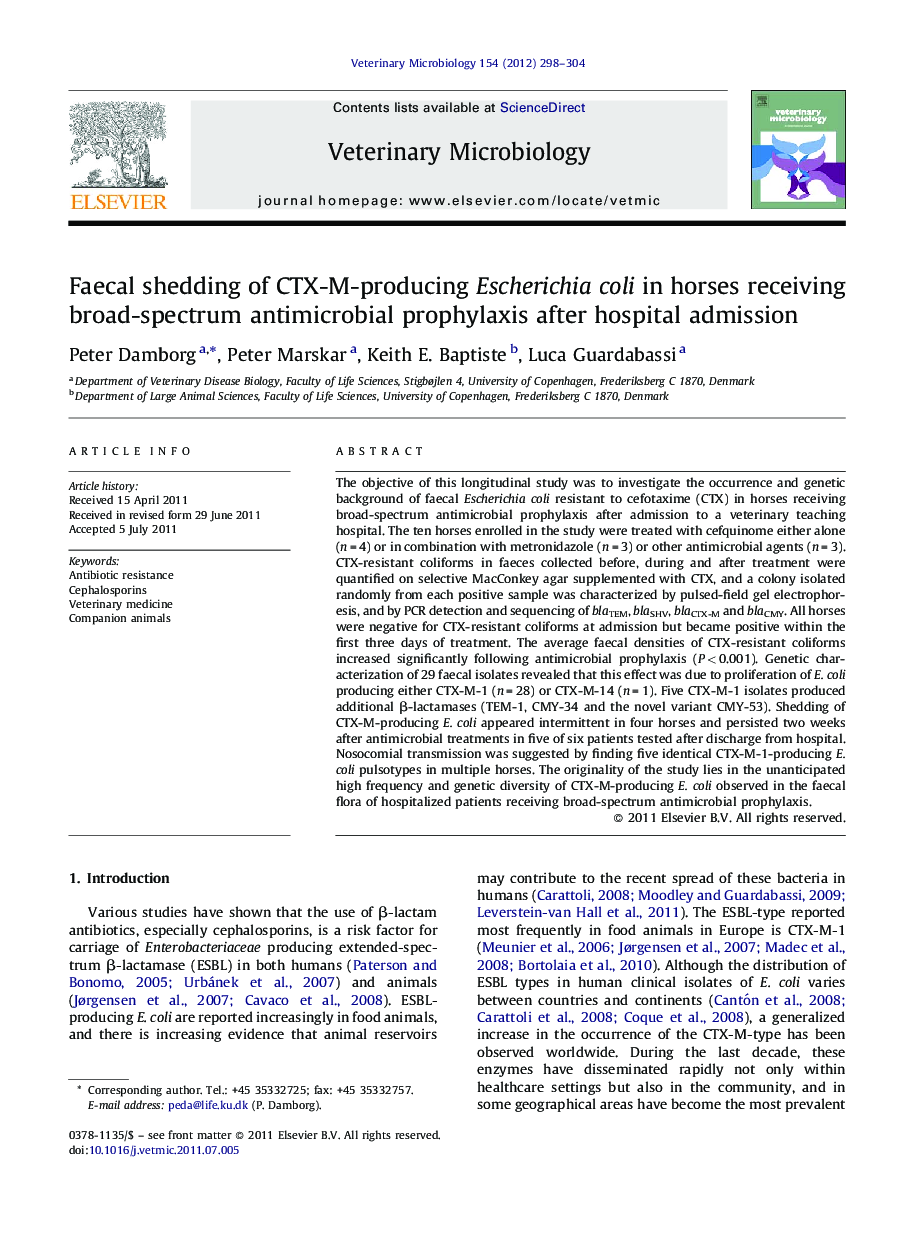| Article ID | Journal | Published Year | Pages | File Type |
|---|---|---|---|---|
| 2467402 | Veterinary Microbiology | 2012 | 7 Pages |
The objective of this longitudinal study was to investigate the occurrence and genetic background of faecal Escherichia coli resistant to cefotaxime (CTX) in horses receiving broad-spectrum antimicrobial prophylaxis after admission to a veterinary teaching hospital. The ten horses enrolled in the study were treated with cefquinome either alone (n = 4) or in combination with metronidazole (n = 3) or other antimicrobial agents (n = 3). CTX-resistant coliforms in faeces collected before, during and after treatment were quantified on selective MacConkey agar supplemented with CTX, and a colony isolated randomly from each positive sample was characterized by pulsed-field gel electrophoresis, and by PCR detection and sequencing of blaTEM, blaSHV, blaCTX-M and blaCMY. All horses were negative for CTX-resistant coliforms at admission but became positive within the first three days of treatment. The average faecal densities of CTX-resistant coliforms increased significantly following antimicrobial prophylaxis (P < 0.001). Genetic characterization of 29 faecal isolates revealed that this effect was due to proliferation of E. coli producing either CTX-M-1 (n = 28) or CTX-M-14 (n = 1). Five CTX-M-1 isolates produced additional β-lactamases (TEM-1, CMY-34 and the novel variant CMY-53). Shedding of CTX-M-producing E. coli appeared intermittent in four horses and persisted two weeks after antimicrobial treatments in five of six patients tested after discharge from hospital. Nosocomial transmission was suggested by finding five identical CTX-M-1-producing E. coli pulsotypes in multiple horses. The originality of the study lies in the unanticipated high frequency and genetic diversity of CTX-M-producing E. coli observed in the faecal flora of hospitalized patients receiving broad-spectrum antimicrobial prophylaxis.
